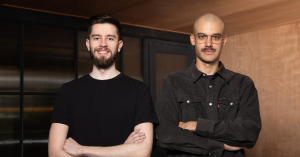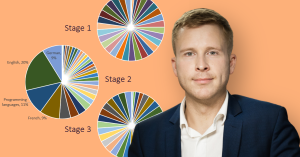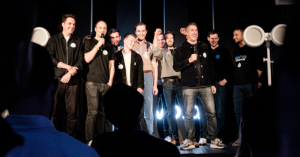Wingbot.AI’s Plans to Scale Through Seed Funding Can Boost AI and Empower DTC E-Commerce
We’re all excited about the AI that powers ChatGPT, but few of us know how it actually works. The secret to this is word embeddings. Rooted in linguistics and computer science, NLP or natural language processing has evolved significantly over the past years and now makes it possible for AI tools to truly understand language and for people to converse naturally with AI chatbots via chatbots, forms, and more.
This is where Wingbot.ai’s expertise comes into play. Wingbot.ai is a Czech company that develops NLP-powered conversational AI solutions for some of the largest companies in the country, with a focus on e-commerce and the ambition to grow internationally.
During its five years on the market, Wingbot.ai managed to win tender in giants like SKODA AUTO and UniCreditBank and develop a first-of-its-kind ready-made AI for e-commerce customer care, with a 90% understanding rate and up to 75% of automated queries. Given the large target market and that e-commerce sales are projected to reach $8,100 million by 2026, Wingbot.ai estimates a revenue of $9,048,600 per year with just 1% of the US market share at Shopify alone after launch. So what’s ahead?
We chatted with Wingbot.ai’s CEO, David Menger – a prominent software entrepreneur and developer of NLP-powered AI, about his plans to scale through seed funding and empower global DTC e-commerce:
The Recursive: WingBot AI has had an impressive journey since its inception in 2018, securing contracts with major companies in the Czech Republic. Could you share more about how you achieved this and how your proprietary AI-NLP, chat component and conversational designer tool contributed to this success?
David Menger: Before 2018 – the year when Wingbot.ai was founded when I worked in a small software house, I saw rising demand for chatbots, especially coming from large companies.
Collaborating with experts and clients, we realized very soon the chatbot tools available lacked crucial features, such as seamless integrations, improved security, or ongoing language support.
We resolved to design a chatbot tool that takes a different approach to overcome this challenge; one that facilitates effective cooperation between developers and conversational designers
Talking about your past experience, you have a successful track record as a software entrepreneur and developer of NLP-powered AI. How has this experience shaped your leadership at WingBot AI and its transition to a SaaS business model?
The truth is that we learned a lot during the years of building custom conversational solutions, which helped large companies save a fortune on customer care. The key to this success was to provide customers with personalized information and solutions. This was only possible by spending a lot of time training the AI until it reached a magical 90% understanding rate. The ROI of this understanding rate spoke for itself: At one company recently, our bot was able to replace six full-time workers over the holiday season.
This level of understanding will be game-changing for SMBs in particular. Right now, reaching such effectiveness with current DIY products on the market is practically impossible.
But now imagine training a single chatbot for a specific domain – the e-commerce sector, and making it available to online businesses at all growth stages. Enterprise-grade tech for an affordable price that can help them scale and provide memorable customer experiences! That’s what we aim to do to help businesses.
You’re launching a unique product in the next two quarters, deeply integrated with two major e-commerce platforms, Shopify and Shoptet. Can you share more about this product and how it will differentiate WingBot AI in the market?
That’s right! Perhaps what makes our product unique is that it is not a DIY chatbot tool (the sort that’s usually not powered by AI) but a well-trained and highly customizable AI chat interface, the sort a big company would pay hundreds of thousands of dollars for, tailored specifically for e-commerce merchants. The chatbot will start resolving customer inquiries immediately, with minimal effort.
The second key differentiator is integration level. Its deep integration with the said e-commerce platforms is essential as around 60% of customer questions require interactions with a backend of a store, and we’re able to automate that. This brings much higher value to e-commerce merchants.
The English-speaking market and the Czech Republic are your primary targets for the new product. Could you elaborate on your strategy to penetrate these markets and how you plan to become the most trusted solution in the Czech Republic?
Our main advantage is the fact that we are targeting a narrow, high-growth business segment: e-commerce. The e-commerce community is forward-thinking: they’re highly receptive to new tech that drives real value. We’re confident our product’s quality will speak for itself.
Talking about the Czech Republic, in particular, we already have such a proven track record at the enterprise-level that we feel confident SMBs are bound to get on board- and it’s unexpectedly a market with a lot of potential: the Czech Republic was just reported to be Shopify’s 5th largest market, with the number of jobs supported by online entrepreneurship up by 33.8% YoY. with we’ll also be able to satisfy the demand for customizations based on a client’s needs and goals.
WingBot AI has shown impressive financial growth, with a 125% YoY growth in revenue collected through fees. How do you plan to sustain this growth, and what is your path to profitability?
To sustain this growth, we realized we should be moving to a more profitable business model, away from the traditional project-by-project, software house model to something that centers recurring fees. Over time, it led us to introduce a chatbot training program, which now helps to raise KPIs, and also our own webchat/voice orchestrator, which is quite a successful product.
What kind of investors are you hoping to attract, and how do you envision their role in WingBot AI’s growth journey?
We are seeking investors who deeply understand the e-commerce industry and can contribute financially and strategically to Wingbot.ai‘s growth. We hope they will provide valuable expertise, industry connections, and guidance. Their involvement will shape our product roadmap and help us revolutionize customer engagement through AI-powered chatbots.
The DTC e-commerce market is growing rapidly, with projected sales of $8,100 million by 2026. How does WingBot AI plan to capitalize on this growth and what part of the market share are you aiming to capture?
Once again, customer care is crucial. The growth experienced in the DTC e-commerce sector requires scaling customer care efficiently without sacrificing quality. The good news is that based on our experience, we’re able to resolve up to 75% of customer tickets. It makes us the must-have tool for fast-growing stores.
Finally, on a personal note, how do you balance your time between leading WingBot AI and your passion for flying glider planes? Has this hobby influenced your approach to business in any way?
Funnily, I think it helped to find the name for the business. But it’s really hard to find time for flying now, especially with the upcoming launch of our new product.
However, given our mission to advance conversational AI in e-commerce and go international, it’s all worth it.







